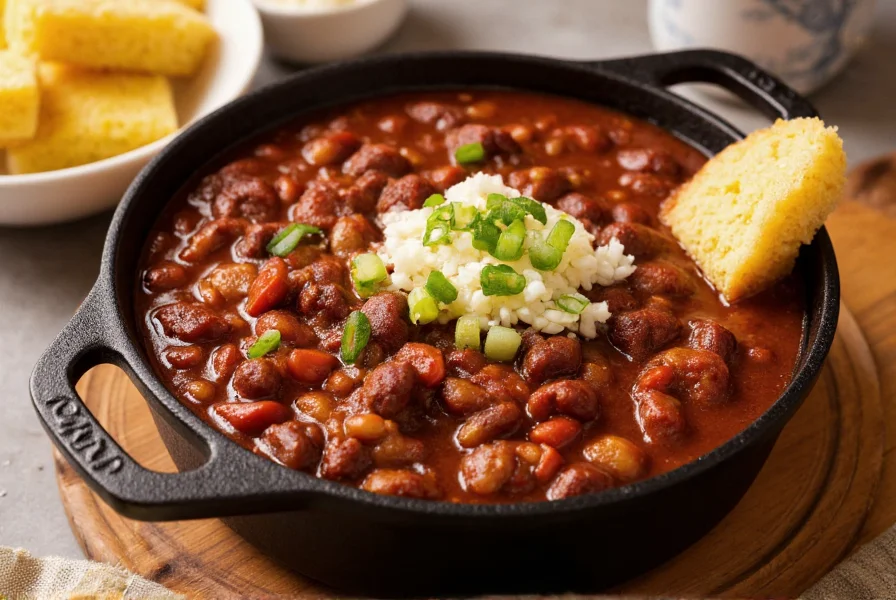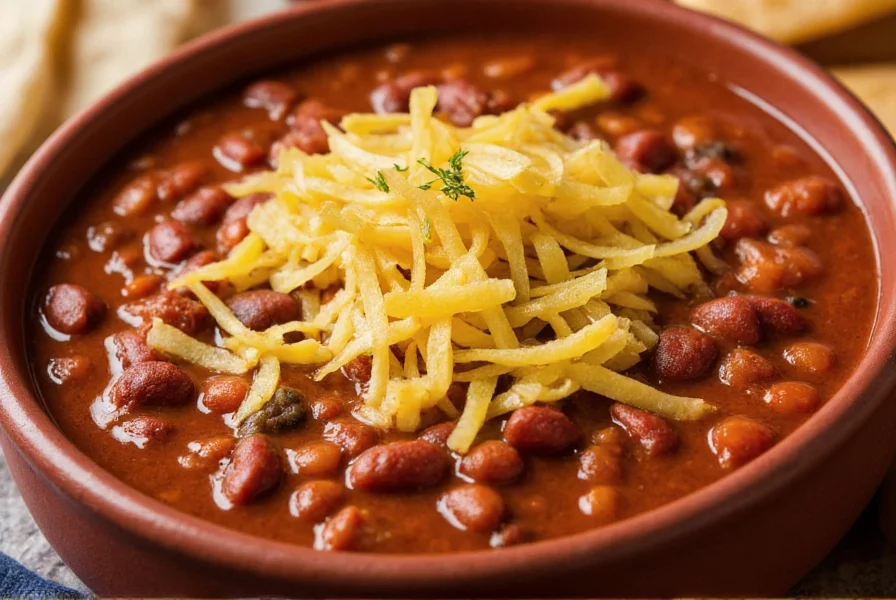When exploring regional American cuisine, few dishes reveal more about cultural adaptation than dixie chili. This beloved Southern specialty represents a unique interpretation of chili con carne that evolved differently from its western counterparts. While chili purists in Texas might scoff at the inclusion of certain ingredients, the dixie chili tradition reflects the resourcefulness and flavor preferences of southern home cooks.
Historical Roots of Dixie Chili
The story of dixie chili begins in the early 20th century when chili con carne migrated eastward from its Texan origins. As the dish reached the southeastern United States, local cooks adapted the recipe using available ingredients and incorporating flavors familiar to southern palates. Unlike the meat-forward texas red chili, southern cooks naturally included beans—which were already staples in southern soul food—and often added tomato products that reflected Italian-American culinary influences.
By the 1930s, dixie chili had established itself as a distinct regional variation, commonly served at church suppers, community gatherings, and family dinners throughout the South. The Great Depression further cemented its place in southern cuisine as the addition of beans made the dish more economical while maintaining nutritional value.
Defining Characteristics of Authentic Dixie Chili
What exactly makes chili qualify as dixie chili rather than other regional variations? Several key elements distinguish this southern specialty:
| Feature | Dixie Chili | Texas Chili | Cincinnati Chili |
|---|---|---|---|
| Beans | Always included (typically kidney beans) | Never included | Sometimes included as side |
| Tomato Elements | Tomato sauce or paste common | Rarely used | Vinegar-based sauce |
| Heat Level | Mild to medium | Medium to hot | Mild with distinctive spices |
| Common Serving Style | Over spaghetti or with cornbread | As standalone dish | Over spaghetti with specific toppings |
Essential Ingredients in Traditional Dixie Chili Recipes
The magic of dixie chili comes from its balanced ingredient profile. While variations exist across southern households, most authentic dixie chili recipes include:
- Ground beef or cubed chuck roast - Provides the meaty foundation
- Kidney beans - The signature bean inclusion that distinguishes it from western styles
- Tomato sauce or paste - Adds depth and slight sweetness
- Onion and bell pepper - The southern "holy trinity" base
- Chili powder blend - Typically milder than texas versions
- Worcestershire sauce - For umami depth
- Optional sweet elements - Such as a touch of brown sugar or cocoa powder
Unlike the minimalist approach of texas chili, dixie chili embraces complexity through multiple flavor layers while maintaining approachability for diverse palates.

Regional Variations Across the South
While dixie chili shares core characteristics, regional differences emerge across southern states:
In Georgia and Alabama, you'll often find dixie chili recipes incorporating a touch of apple cider vinegar for brightness. Carolinas versions sometimes include a hint of mustard for that distinctive southern barbecue influence. Moving west toward Tennessee and Mississippi, recipes may feature additional vegetables like corn or even a splash of coffee for depth.
The Florida Keys developed their own take called "conch chili," which substitutes seafood for some meat, demonstrating how the dixie chili concept adapts to local ingredients while maintaining its essential character.
Serving Traditions and Modern Adaptations
Traditionally, dixie chili appears in two primary serving styles:
- Chili spaghetti - The most iconic presentation, featuring dixie chili ladled generously over cooked spaghetti, often with shredded cheddar cheese on top
- Classic bowl service - Served in a bowl alongside cornbread, with optional toppings like sour cream, onions, or shredded cheese
Modern home cooks have adapted dixie chili for contemporary lifestyles while preserving its essence. Popular variations include:
- Slow cooker dixie chili for hands-off preparation
- Vegan dixie chili using plant-based meats and extra beans
- Instant pot dixie chili for faster cooking times
- Mini dixie chili pies for individual servings
These adaptations maintain the soul of the original while fitting modern cooking preferences—a testament to the versatility of this southern classic.
Finding Authentic Dixie Chili Today
While many southern households maintain cherished dixie chili recipes passed through generations, several notable establishments serve exceptional versions:
In Atlanta, The Varsity has served its distinctive dixie-style chili since 1928, maintaining a recipe remarkably consistent with early 20th century versions. Nashville's Peg Leg Porker offers a barbecue-influenced take that incorporates their signature rubs. For those seeking the dish in its most traditional home-style preparation, community cookbooks from southern churches often contain the most authentic dixie chili recipes.
Preserving the Legacy of Dixie Chili
As American food culture becomes increasingly homogenized, regional specialties like dixie chili face the risk of being overshadowed by standardized versions. Food historians and southern culinary enthusiasts actively work to document and preserve authentic dixie chili recipes through community cookbooks, cooking demonstrations, and digital archives.
The enduring popularity of this southern specialty demonstrates how regional adaptations of dishes can develop their own cultural significance. More than just a meal, dixie chili represents community, resourcefulness, and the southern tradition of making something hearty and welcoming from available ingredients.
Frequently Asked Questions
What makes dixie chili different from regular chili?
Dixie chili differs from traditional chili by consistently including beans (usually kidney beans), featuring a milder spice profile, often containing tomato elements like sauce or paste, and sometimes incorporating subtle sweet notes. Unlike Texas-style chili which focuses solely on meat and chiles, dixie chili embraces a more complex ingredient profile that reflects southern culinary traditions.
Is dixie chili the same as Cincinnati chili?
No, dixie chili and Cincinnati chili are distinct regional variations. While both may be served over spaghetti, Cincinnati chili features a unique spice blend with Mediterranean influences (cinnamon, cloves, allspice) and is typically served with specific toppings in set styles (2-way, 3-way, etc.). Dixie chili maintains a more traditional chili flavor profile with beans, tomato elements, and southern spice preferences.
What are the essential ingredients in authentic dixie chili?
Authentic dixie chili requires ground beef or cubed chuck roast, kidney beans, tomato sauce or paste, onion and bell pepper, a mild chili powder blend, and Worcestershire sauce. Many traditional recipes also include optional elements like a touch of brown sugar, cocoa powder, or apple cider vinegar for depth and balance.
How do you serve dixie chili traditionally?
Dixie chili has two traditional serving methods: as chili spaghetti (ladled over cooked spaghetti with cheese) or served in a bowl alongside cornbread. Common toppings include shredded cheddar cheese, sour cream, and diced onions. The spaghetti presentation represents the most iconic way to enjoy this southern specialty.
Can you make dixie chili in a slow cooker?
Yes, dixie chili adapts perfectly to slow cooker preparation. Combine all ingredients except beans in the slow cooker, cook on low for 6-8 hours, then add pre-cooked beans during the last hour. This method develops deep flavors while maintaining the characteristic texture of dixie chili. Many modern dixie chili recipes have been optimized specifically for slow cooker and instant pot preparation.











 浙公网安备
33010002000092号
浙公网安备
33010002000092号 浙B2-20120091-4
浙B2-20120091-4